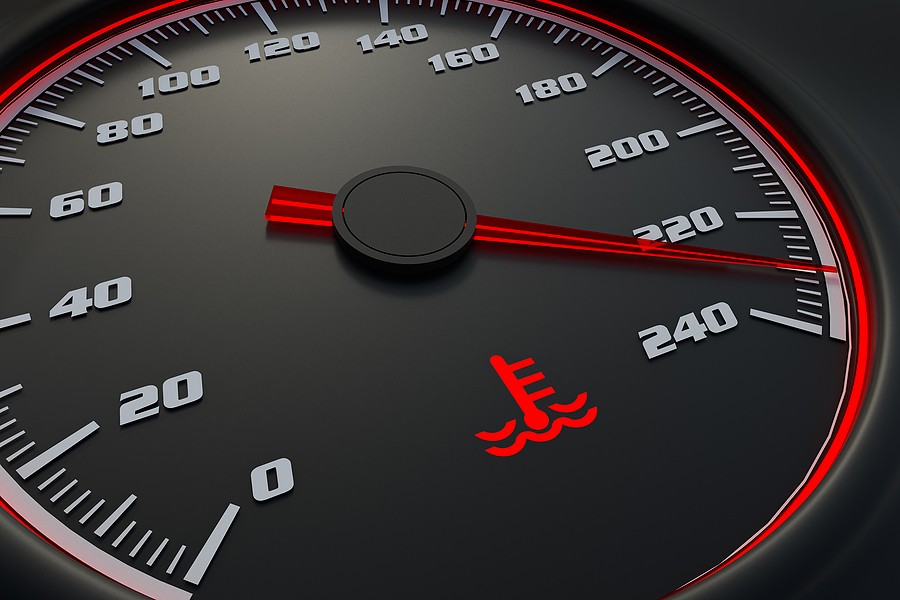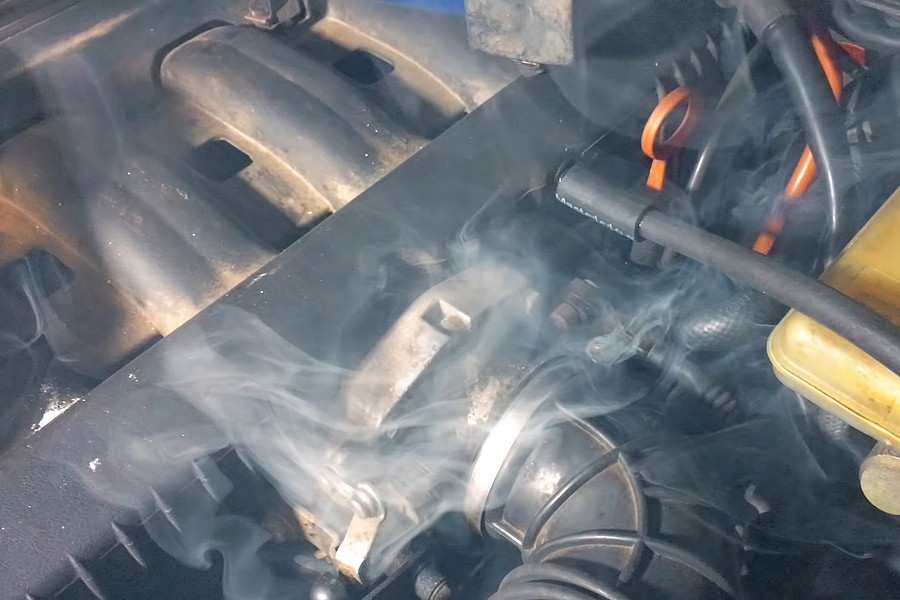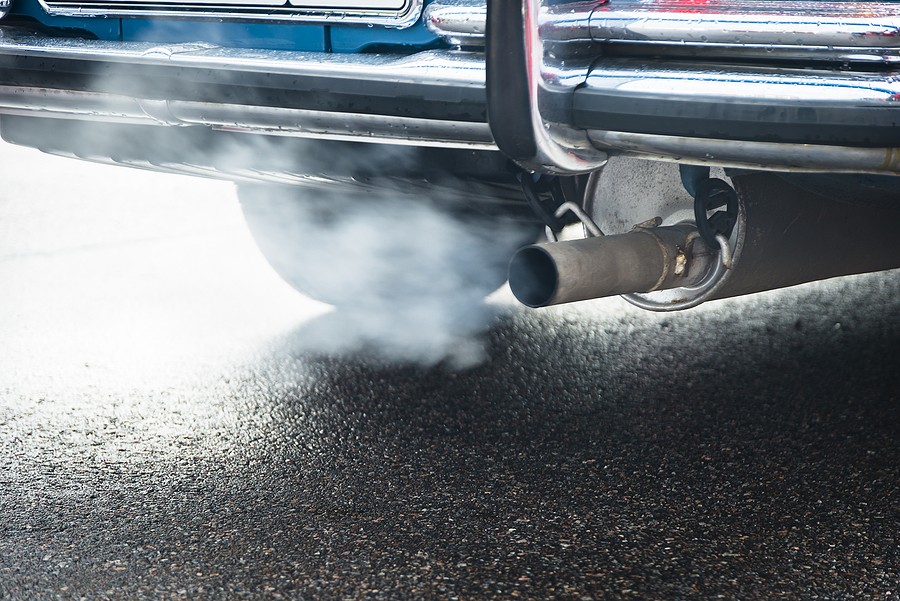These symptoms should help you to know if your car’s head gasket is blown:
- Overtopping coolant
- High engine temperature
- Fluctuating engine temperature
- Visible white smoke from the exhaust
- Coolant leak
- Bubble in the radiator
- Milky oil substance
Dealing with engine problems can be very frustrating, but it is a problem you might experience during the lifetime of your car. While so many issues could go wrong in your engine, one of the very common ones is a blown head gasket.
If you're a mechanic says that your car has a blown head gasket, it might indicate that your vehicle is worthless, and spending the money fixing it might not be worth it because it's very expensive to repair.
Understanding the main symptoms of a blown head gasket helps you predict what to do next. In other words, it should give you an idea about the potential of expensive repair costs. Detecting these symptoms early can help you fix the problem without replacing major components.
This article summarizes the seven most common symptoms that could help me answer, “How do you know if your car's head gasket is blown?”
What is the head gasket, and what does it do?
Before we dive into the details about “to know if your car's head gasket is blown,” it is essential for you as a car owner to understand the importance of the head gasket and its role in your vehicle.
The head gasket is a very thin metal component that sits on top of the cylinders to protect them and prevent fluids from leaking inside them. The head gasket also prevents hot gases from leaving the cylinders and impacting the other components within your engine.
This head gasket must remain working all the time. Otherwise, you can easily deal with significant issues that might impact your vehicle's drivability and might get to the point where you have to sell it.
Unfortunately, overviews, it's not surprising to deal with major problems related to a bad head gasket. While this is common, you should address the problem earlier to give yourself more time driving this car before it feels complete.

How do you know if your car’s head gasket is blown?
One of the first and most critical skills you must learn as a driver is to understand the main symptoms that could indicate A blown head gasket. By understanding those, you can prevent the problem from evolving and get the vehicle repaired without necessarily installing measure components.
There are tons of symptoms that you might experience when you're driving a car that has a slightly bad head gasket. However, as the head gasket gets to the point where it is blown or about to blow up, you'll start dealing with more severe symptoms that no one can ignore.
The following list summarizes the seven most common symptoms that could help answer the question, “How do you know if your car's head gasket is blown?”
1- Overtopping coolant
The first and easiest thing you could do as a car owner to check if your car has a blown head gasket is to check the coolant. Usually, people will think that looking for a coolant leak can be a strong sign, but what's even stronger is to check if the column is overtopping or reaching the top of the reservoir.
You might have a general idea that your coolant was less before. If it overtops, it indicates something is happening internally, pushing the coolant and reversing its direction.
You cannot say if the problem is related to a blown head gasket because it could be a big issue related to the engine. However, that helps narrow the list of potential culprits and helps your mechanic identify the problem immediately.

2- High engine temperature
When your head gasket blows up, it's not surprising that the engine temperature is increasing significantly. One way to check that is by looking at the dashboard. There is usually a temperature gauge that tells you the current engine temperature.
This gauge must never read super high levels. Otherwise, it is a quick indication that your vehicle is overheating, and without addressing the problem as soon as possible, you can easily deal with a self-destructive engine.
Dealing with engine overheating can be a very hard problem to resolve if you need to know exactly what's happening. In other words, you can only say for sure that an increased engine temperature is due to a blown head gasket if you dig deeper and have your mechanic check the different components. However, you can identify the potential culprit immediately if you monitor for multiple symptoms simultaneously.

3- Fluctuating engine temperature
Increased engine temperature is a very common problem, indicating issues with the head gaskets, or sometimes you might notice that the temperature gauge is reading very weirdly. In other words, you might see the temperature low at some point, but then it spikes suddenly without any previous warnings.
This temperature fluctuation might be an indication of a blown head gasket. Therefore, if you notice such a thing, it is critical that you don't ignore the problem, and you must take it as seriously as possible.

4- Visible white smoke from the exhaust
When the head gasket is blown up, you will start dealing with other more obvious symptoms. For example, as the head gasket blows up and the different fluids get inside the cylinders, the cylinders will start burning coolant. When this happens, you'll see strong, visible white smoke coming out of the tailpipe of your exhaust system.
In most modern cars, you shouldn't see any visible smoke coming out of the tailpipe because all these cars are designed in a way that takes care of any harmful gases and allows only a small amount to reach the environment so it doesn't harm the atmosphere.
That's why you should always monitor any strange symptoms indicating an internal problem as a responsible car owner. However, remember that seeing some visible smoke during early morning starts is not a bad issue. Still, if this continues, it might indicate an internal issue related to a blown head gasket.

5- Coolant leak
Coolant leak is another very common symptom indicating a blown head gasket. As mentioned before, the head gasket prevents these fluids from getting inside the cylinders. When the head gasket is not doing its job, it's unsurprising to see coolant leaking inside and outside the cylinders.
The coolant leak will not be limited to the cylinder location because it can easily leak outside of the car, and you might see some drops of fluid underneath the location of the engine. If the leak is very severe, you might even start noticing fluid puddles, which is a serious symptom that you should take care of immediately.

6- Bubble in the radiator
In some instances, a blown head gasket can lead to air getting inside the different components of your engine. This is not a good thing because if bubbles form inside the radiator, for example, they impact the system's overall pressure, which also impacts the system's functionality.
If you notice any of those bubbles within the system, you must address the problem as soon as possible. Remember that bubbles inside the radiator might be related to a blown head gasket but could also be an issue related to a leak somewhere within the cooling system pathways.
I think the best thing you could do to confirm is to check with your mechanic and have him do a thorough inspection to identify any potential internal or external coolant leaks.

7- Milky oil substance
A blown head gasket can easily lead to a very common symptom typically linked to this problem: a Milky oil substance. Typically, you might have a general idea about the engine oil's consistency and characteristics. Still, when it gets mixed with coolant, this consistency will change.
Open the oil cap and look underneath it. You'll see that there is something like a milkshake, which indicates that your oil got mixed with coolant, and that is a very serious situation that you addressed before moving your vehicle a single inch.

Final Thoughts
A blown head gasket is never a fun situation. It is a simple indication that your vehicle is about to fail if you ignore the problem longer. Therefore, it is critical for you as a car owner to understand the main symptoms that could help you identify blown head gasket problems as early as possible.
This article summarized the seven common symptoms you might experience, including increased indent temperature, coolant leak, milky oil substance, etc. Whenever you notice any of those symptoms, take the issue seriously and contact your mechanic because you might not be able to drive your vehicle.
It could be the perfect timing for selling this vehicle if you're a mechanic indicator that you need to replace major components, which means significant repair costs. If you are looking for more details and for someone interested in buying your car regardless of its typing condition, contact Cash Cars Buyer at 773-791-4363.
If you're interested in similar posts, we highly encourage you to visit our blog by clicking here.



